SaaStr |
- SaaStr Annual 2021 Prices GO UP on Tuesday!!
- 7 Lessons Helping Start Calendly, SalesLoft and Pardot (Video + Transcript)
- When to Stop Doing It All Yourself
| SaaStr Annual 2021 Prices GO UP on Tuesday!! Posted: 30 May 2021 08:10 AM PDT We are so excited to be the first major Cloud event to be BACK!! Dreamforce is back as well, and things are going to be great in IRL SaaS for 2021!
We’re doing our traditional, final best pricing for tickets over this Memorial Day weekend! So grab the final “Early Bird” tickets now here!! This is the best pricing we’ll ever have!! And prices go up on Tuesday!! It’s gonna be just awesome. The post SaaStr Annual 2021 Prices GO UP on Tuesday!! appeared first on SaaStr. |
| 7 Lessons Helping Start Calendly, SalesLoft and Pardot (Video + Transcript) Posted: 30 May 2021 06:00 AM PDT As part of the run up to 2021 SaaStr Annual in the SF Bay Area Sep 27-29, we’re taking a look back at some of our favorite classic sessions. (And grab the best deal ever on 2021 Annual tickets here). One great session you you may have missed from David Cummings, the seed investor in Calendly, Salesloft. Terminus and more, as well as co-founder and CEO of Pardot. David Cummings is the co-founder of the Atlanta Tech Village, Pardot which sold to ExactTarget/Salesforce.com, Hannon Hill, Rigor, SalesLoft (raised over $175M in capital), Terminus (raised over $70M in capital), and several more. Join him for a session on lessons learned over the years through Pardot to Calendly. Want to see more content like this? Join us at SaaStr Annual 2020. David Cummings | Founder @ Atlanta Ventures FULL TRANSCRIPT BELOW All right. I’m excited to be here today to share a few stories from the SaaS world. I got my start in software 25 years ago. I was sitting in high school and I had this idea to build some shareware software, so like any enterpriser in 9th grade, I wrote some code, put it on America Online, CompuServe and Prodigy at the time, and a random stranger from Idaho emailed … Or, sent a check in the mail for $12.95 to my residence in Tallahassee, Florida. And so, when I got that check in the mail for $12.95 cents from a complete stranger, I knew 25 years ago exactly what I was going to do for the rest of my life. And so, what I want to do is share a few stories, a few lessons learned, some of the success stories, some of the things that didn’t work , and then really just talk about SaaS, talk about must haves, talk about nice to haves, talk about specific lessons learned, and then go from there. All right, quick show of hands, who has ever heard of Pardot? Any Pardot? That’s awesome, 95% of the audience. All right, who here has heard of SalesLoft? All right, maybe 60% of the audience. And who here has heard of Calendly? All right, 110% of the audience. There must be something special there. So Pardot, SalesLoft and Calendly, you’re thinking, “How is this random guy from Atlanta 2000 miles away at the starting floor, at the ground floor of three pretty interesting SaaS companies?” So let’s jump in and talk a little bit more. I started a software company in college to make it easy to update websites called Content Management Software Now, and I had this idea for Pardot, I wanted to make it easy for marketers to run campaigns online and measure their results. I recruited a classmate of mine from college and we set out to create this marketing automation product geared towards the small and mid-sized business. From a product point of view, our timing was impeccable. We started the business in 2007. We sold the business in 2012. We’d been in business for five years. We raised $0 of venture capital. We sold the business for $100 million and we had never held a single board meeting, so think about that. We sold Pardot. We had 13 million of recurring revenue, 100% year over year growth. Today, six years later, Pardot as part of salesforce.com last calendar year did 250 million of recognized revenue, so think about that. Five years to get to 13 million, bootstrapped, six years after that to get to 250 million of recognized revenue. SalesLoft, why was that Pardot, I tried to recruit this guy, Kyle Porter, to come run sales at Pardot. I sat down with Kyle at lunch. We sat down at the Ruby Tuesday, if anybody’s been ever from the South, there’ve been to the South, you know what a Ruby Tuesday is. And so, I was sitting down with Kyle Porter at the Ruby Tuesday next to Lenox Mall in Buckhead, and I tried to recruit him to come to Pardot. And he’s like, “David, I want to start a company. I want to be an entrepreneur. I want to go do my own thing,” and so right there on the spot, I was like, “Hey Kyle, let’s start a company together. Let’s be 50/50 co-founders and let’s start a company in the sales space.” Now, seven years later, SalesLoft has over 400 employees, has raised over $75 million of venture capital, and in the next two years, if not sooner, my prediction is that they will be a unicorn that you’ll be able to read about on Tech Crunch. [Editors note: yup, see above]
I was hanging out at the Atlanta Tech Village, and a friend of mine was like, “Hey, you need to meet this entrepreneur, Tope.” Tope has a working prototype of a scheduling system that makes it really easy for people that take lots of meetings or appointments. Think of your salespeople, think of your VCs, think of your customer support people, people that take lots and lots of meetings. Tope had invented a much simpler, more beautiful way to schedule meetings. I sat down with Tope, one single meeting, he described the process of building the software. He described the process of getting a few beta users, no paying customers, and right there on the spot I wrote him a check for $350,000 as the sole pre-revenue investor. And today, Calendly is used by millions and millions of people around the world. Let’s talk about some of the specific lessons learned within these different b usinesses. The Pardot business, version 1.0, the initial idea that I came up with for Pardot was simply to do an outsourced lead generation S as a service. The idea is that you would go to Pardot, you say, “Hey, I’m an email marketing vendor, I want to buy leads for 50 bucks a pop,” and then Pardot with our system, we would go and generate those leads and we would sell them to multiple vendors. That was Pardot 1.0. We built a working prototype. We got it into the hands of a few early customers, and they said, “David, we don’t want to buy leads as a service from you, we want the software that you built to generate those leads. We want to manage our landing pages, we want to do our email marketing, we want to run lead scoring, we want to build forms and have the data synchronized with the CRM.” We quickly pivoted, and the rest is history, marketing automation software. Day one with SalesLoft, with Kyle, the first idea that we had was to be a knockoff of InsideView. So InsideView shows a newspaper of sorts of your contacts. So you want to know as a salesperson when a contact of yours changes jobs, like a job change alerts. And so, that was product number one. Failed miserably. Product number two for SalesLoft was a prospector tool, which is code for, scrape data off of a number of different sites and build contact lists so that you can go prospect against them. What we quickly found with the prospector tool is that it was a sugar-high. People would come in, they would go get 5000 contacts, and then they wouldn’t renew. We knew we wanted to build something that had sustainable recurring value. Product number three for SalesLoft is today’s product, sales engagement software. Software that allows you to run cadences, allows your sales reps to send more targeted emails, to make more targeted phone calls, and to wrap it in a very efficient process. Calendly with Tope, from day one, Tope had the vision to build beautiful, simple scheduling software. There’s a number of vendors out there that had been doing it for decades, but they had built it more for the enterprise audience, way too much functionality, way too difficult to use, and so Tope, from day one, beautiful, simple scheduling software. And so, what I’ve found is that you want to have strong opinions about where you want to go. With Pardot, we wanted to be in the marketing tech market. With SalesLoft, we wanted to be in the sales software world. With Calendly, we want it to be in the scheduling world. And so, we entered those markets and then over time found the right product to build a great business. All right, funding optional. I already told you the story, Pardot, zero to 13 million of recurring revenue in business, five and a half years, sold the business and never had a single board meeting. As part of that process, we did burn $3 million. David, if you bootstrapped the business, you had no investors, no VCs, how’d you still burn $3 million? We worked closely with Silicon Valley Bank, and we got a line of credit based on a multiple of our recurring revenue. And so, as the business grew, the line of credit grew and we just kept burning all the money that we could get from the bank. Back then, we negotiated with Silicon Valley Bank that there were no warrants, so there is no dilution at all and we’ve got $3 million from the bank. And at time of sale, we had burned all $3 million. In today’s world, most SaaS companies, at least the ones that I’m involved with, the investors on the board recommend using lines of credit as a safety net, but not to actually grow the business. Perhaps it’s because the VCs want to put more money into the business, or perhaps they’re more prudent after going through some more up and down cycles. But for us at at Pardot, we use that bank line of credit to grow even faster with no dilution. One of the important things that I think is often overlooked is aligning your personal goals with the funding of the business, right? So too often entrepreneurs come to me and they say, “David, we want to go raise venture capital.” And I say, “Hey, let’s pull that back for a second, are you sure you want to get on that treadmill? Are you sure you want to raise money every 18 to 24 months? Are you sure you want to keep diluting yourself?” I sat in on the session this morning with Ryan Smith from Qualtrics, and he told the amazing story of going from zero to 500 million of revenue and not requiring any primary capital. 500 million in recurring revenue, and they never raised any money that went to the balance sheet. I think there’s a lot more creative ways nowadays, but even more important than that, align the funding with your personal goals. My personal goal with Pardot was optionality. I wanted to create a great business that if we wanted to raise money, we could. If we wanted to sell the business, we could. If we wanted to do nothing, we could. That was my personal goal. With Kyle at SalesLoft, he wants to build a great, large, enduring company that goes public, and so his goals involve raising tremendous amounts of capital and really building the largest company as prudently as possible, but also as fast as possible. Back in the early Pardot days, we had just hit a million of recurring revenue. I thought that this was a big market. I went to 27 different venture capitalists and I pitched Pardot. I tried to raise money, I went to DC, I went to Boston, I went all up and down Sand Hill Road. On Sand Hill Road, I pitched one of the venture firms that’s the most famous in the world, so think of the most famous venture firm in the world, and I went and pitched one of their top partners there. And before we were two minutes into the conversation, he wanted to convince me that we had to move from Atlanta to Silicon Valley for us to be a real company. Less than two minutes into the conversation. I said, “No thanks,” and I moved on. After pitching those 27 VCs, I went back and I did a little spreadsheet jockeying. I said, “Hey, what if we keep growing at 100% year over year? Or what if we sell 20/25% of the business and we increase our option pool? And what if we do that two, three four times, what do the different outcomes look like and how does it affect optionality?” So after personally pitching 27 VCs, I said, “You know what, raising money isn’t for us. We’re going to continue plowing ahead and we’re going to continue bootstrapping the business.” Nowadays, capital is so much more mobile. SalesLoft’s raised money from firms in New York City, SalesLoft’s raised money from firms in Silicon Valley. The great thing that I’m very proud of is that the majority of the first two rounds of financing for SalesLoft came from the Southeast. But again, capital is so much more mobile. What’s more difficult coming from a city like Atlanta growing SaaS businesses is sea-level talent. We have amazing individual contributors, we have amazing people from a middle management perspective, but the C-level talent has been a real challenge. At Calendly, the COO lives in Charleston, South Carolina. At SalesLoft, the COO lives in San Jose. The CRO, the chief revenue officer, lives in Denver, but the great thing with technology is that you can have a distributed C-level team and still execute at an amazing level. One of the more common things that I tell entrepreneurs is to immediately raise prices. At Pardot, we started our product, we charged $65 a month, and then six months later we went to $125 a month, and then six months later we went to $325 a month, six months later, $500 a month, then 750, then 1000, then 1500 a month. Every time we raised prices, the sales team was freaked out that nobody was going to buy our software. Every time we raised prices, it was a battle between us; Adam and I as the co-founders and the sales leadership and the sales managers and the sales team. Everybody was scared that people weren’t going to buy because we had just raised prices. Every single time it was a non-issue. What I like to tell entrepreneurs is that you want to always charge something for your software, so even at day zero, discharge something, you get much more honest feedback when you charge something, and then raise your prices every six months, go ahead and double them until you’re at the upper end of reasonable. You’ll know you’re at the upper end of reasonable when people on the phone start asking for discounts 25 to 50% of the time. So if 99% of the time, people are asking for discounts because they can’t afford it, but want it, you’re past the upper end of reasonable. When people ask for those discounts, have a consistent discount policy, 10, 15, 20% off, but never give a discount without asking for something in return. Always get something in return. Get them to commit to doing a press release, to be a testimonial, to do a webinar with you, to do a reference call, to speak at your next user conference. Always get something in return, and don’t be afraid to give a discount within some defined range. Take your price into the upper end of reasonable, have a discount policy, and always, always get something in return. At Pardot, SaaS wasn’t a mature industry. We didn’t really know what we were doing, and so of course we ran around and looked at the typical enterprise software world, looked at their metrics, looked at the types of businesses that capture a lot of value up front, and then a much smaller maintenance and support stream, and we realized that this wasn’t applicable to a recurring revenue subscription business. A friend of mine introduced me to a book that I highly recommend to everybody. It’s got a very weird title, but it’s worth the read; Mastering The Rockefeller Habits. And so, in the book, Mastering The Rockefeller Habits, which I would still recommend to everybody today, it talks about rhythm, data and priorities. When you walked into the Pardot office, we had a huge 70-inch LED TV with a simple Google sheet on it. That Google sheet had six metrics for the business, and every metric was color-coded; red, yellow, green or super green. Red, yellow, green, super green. You’d walk into the Pardot office and you would know instantly where we stood across the most important six metrics in the business. You log onto our homepage of our intranet, and that Google sheet was embedded as an I-frame on that homepage; red, yellow, green, super green, six metrics to run the entire business. Now, we sold the business at 13 million of revenue. We had no CFO watching the SalesLoft business grow over the years. SalesLoft obviously is more sophisticated, has a CFO, has an FP&A function, and the big difference that we never got to on the Pardot side that SalesLoft has been doing for years is taking your aggregate metrics and breaking it down by segments. The small business segment, the mid-market segment, the enterprise segment, whatever it matters to your business, once you hit 10 million in recurring, my recommendation is to take all your generic metrics, CAC to LTV, magic number, all your generic metrics, and then break them out by the three most important segments of your business. It might be verticals, it might be industries, it might be customer sizes, but take the typical SaaS metrics and break them out into three different segments, and then track those over time. But again, that’s when you hit 10 million of recurring revenue. My biggest takeaway from metrics after being on the boards of a number of SaaS companies investing in 27 different companies is that churn becomes the biggest killer over time. The Holy Grail, my most favorite metric personally for SaaS companies is net negative churn. I want to see businesses that continue to grow year over year without signing any new customers. That’s the Holy grail of SaaS, a business that grows year over year without signing any new customers. If you’re going to take away anything at all, one single thing from this talk, it’s figure out how to have net negative churn in your business, the Holy Grail of SaaS. At Pardot, the business was growing so fast, we were so resource-constrained that we did the typical promote from within, over and over, promoted from within. The challenge is that the business is growing like this, but our senior talent wasn’t growing fast enough. Our senior talent wasn’t going to be able to make the next leap to go from 13 million of recurring to 20, to 50 and beyond. We knew that we were going to have to do a wholesale change of our senior team at time of sale. One of the things that we did do a good job was investing in our people. Everybody got a $2000 a year budget to go to conferences like this to do continuing education. We did a really good job of motivating and promoting the internal referrals so that our existing employees would refer other potential employees. We paid a $2500 bonus for any referral, and then we paid a $10,000 referral bonus for anybody that referred a software engineer. Very simple idea, $2000 bonus for referring anybody. $10,000 bonus for referring a software engineer. And it worked great. We had an amazing number of referrals inside of the business. And then, on the interviewing side, on the recruiting side, there’s a book that I recommend called Top Grading, and in the Top Grading book, it talks about the chronological in depth survey for all potential employees. These are really hard questions, really specific to every job that that candidate has ever had. Why did they leave that position? What were their responsibilities? Who did they report to? Who reported to them? And what you want to listen for, whether they have two years of experience or 22 years of experience, you want to listen to the fact that they were pulled from their position into the next role. You want to hear that somebody somewhere saw something in them and pulled them from role A and then pulled them from role B. The book, Top Grading and the chronological in-depth survey is highly recommended. My most important lesson as a business leader is around the importance of culture. One day, early in the business, I walked into the office and I had meetings scheduled that morning and I didn’t want to meet with the people. There were people on my team, people that I had recruited, people that I had worked with and I didn’t enjoy working with them. And so, I went through that soul searching process. I read the books, Good To Great, I read the books, Built To Last, and I wanted to understand, what am I missing here? As the CEO, as the entrepreneur, as the founder of a high-growth business, shouldn’t I want to go to work? Shouldn’t I want to meet with my team, with my staff? And so, after that soul searching process, I came to appreciate and buy into the importance of building an amazing culture. For us at Pardot, we defined it as people who are positive, self-starting, and supportive, and then we had two simple overarching mantras, be the best place to work and the best place to be a customer. By being the best place to work, we held our employees to a level that we were going to focus on doing whatever it took to be an awesome employer, and then the best place to be a customer, whenever we had those challenging trade-off questions, do we fix these bugs for customer A or do we add this new feature to sign prospect B? And so, those continual challenges, by holding, be the best place to work and the best place to be customer as our overarching mantras, it made it easy to make the right decision when we had hard questions. From a culture perspective, of course we did all the common things, but we really tried to push the limit when it came to the benefits side, to investing in the culture. At Pardot, we provided free house cleaning to all 100+ employees. Company administered house cleaning. We took our central conference room, turn it into a spa, hired a masseuse on staff as a W2 employee. We followed the results only work environment, so our vacation policy was exactly two words; be reasonable. No sick days, no flex days, anybody could work anytime, anywhere. The results that were expected for every position were black and white. They were laid out across the entire business. A results only work environment. But the hardest challenge was scaling that culture, going from Adam and myself, two co-founders, to 100+ employees. We implemented what we called the culture team. As a senior team, we sat around the table and we said, “What employees in the business best embody our core values?” People who are positive, people who are supportive and people who are self-starting. And as a senior team, we identified six people internally, six out of the 100+ employees that we felt best embodied the culture. And so, we paired them off into teams of two, and so the culture team was the very last part of the interview process. The candidate could go interview with the hiring manager, go through the HR screening, go through numbers and numbers of interviews, and at the end of that process, they were interviewed by our culture teams purely for culture fit. Are they positive? Are they self-starting? Are they supportive? And so, we scaled the culture consistency challenge by having these amazing people that were already on our team assess candidates for culture fit. From a business point of view, we run the number one best place to work for multiple years in Atlanta. We implemented a number of these ideas at SalesLoft. SalesLoft won the number one best place to work in Atlanta, and I truly believe that culture is the only sustainable competitive advantage that’s completely within the control of the founders. You can’t control your competitors, you can’t control government, you can’t control the weather, but day in and day out, you can control the type of environment that you provide for the team. And so, culture in my opinion, is the only sustainable competitive advantage. A few lessons learned, a few stories from Pardot, a few stories from SalesLoft, a few stories from Calendly. From a business point of view, I don’t think this is rocket science. On the entrepreneur’s side, I look for entrepreneurs who are very resourceful, entrepreneurs that are full of grit. From a business point of view, the most important thing that these entrepreneurs can instill within the organization is staying close to the customer and then iterating quickly. The size and the scale of success to date is partly driven by the markets that these entrepreneurs chose, but at the end of the day, the underlying theme that’s allowed these businesses to scale has been the consistent culture across the team members. Thank you for your time today. The post 7 Lessons Helping Start Calendly, SalesLoft and Pardot (Video + Transcript) appeared first on SaaStr. |
| When to Stop Doing It All Yourself Posted: 30 May 2021 05:20 AM PDT Perhaps the biggest difference between most first-time founders and most second-time founders is how long they try to do it all themselves. This isn’t a criticism — the first time you usually sort of have to. You have less capital to hire a team, and less experience building teams. And second timers often over-hire early, if VCs throw a ton of money at them in the early days. But most of us under-hire at the senior level for one reason or another as we cross $1m-$2m in ARR, and there are two key times almost all founders hit organizational walls trying to do too much themselves:
Both sort of sneak up on you, and slow down your growth. The first wall you tend to hit is between $3m and $5m in ARR if you don’t have “all” the VPs: VPs of Sales, Marketing, Customer Success at a minimum, Product ideally, and often, Engineering. If you don’t, you just hit a scaling wall doing it all yourself. Each functional area needs a full-time VP to scale. There is just too much going on by this point, and the complexity begins to grow an order of magnitude. And you just don’t have the time. Sales slows down. Leads plateau. NPS drops. Releases slip. Customer visits decrease. You need a seasoned owner for each of these. The next wall you hit tends to come up around $10m ARR or so. It’s when you finally have all the VPs, and you add a few more, and you’ve sort of figured it out, finally … and you have 8+ direct reports. This is just too many. 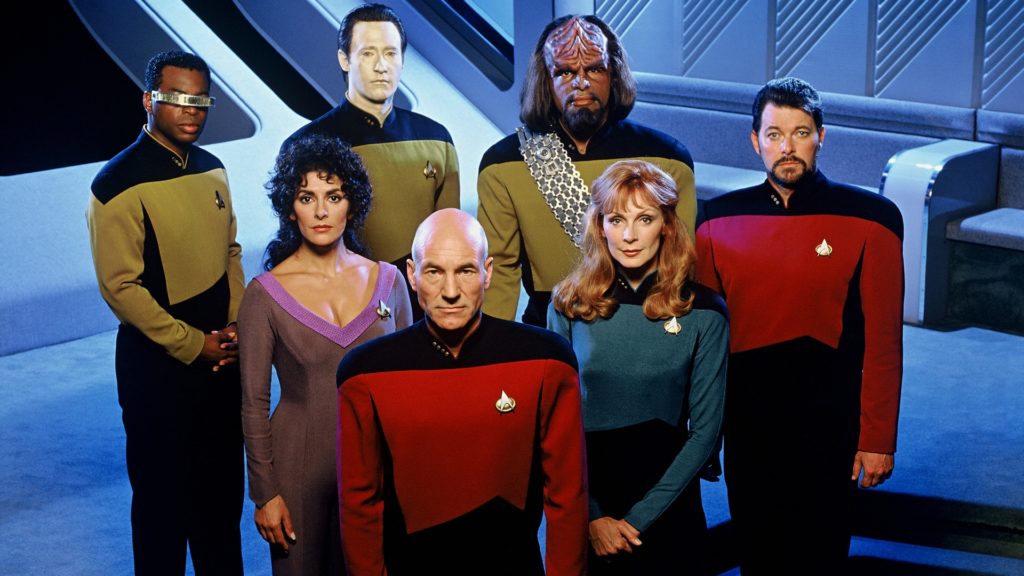 6 Direct Reports, Including a COO. Plenty of time to think in the Ready Room. I've come up with 2 rough rules here to avoid stalling out by Owning Too Much Yourself:
and
The COO-By-$10m in ARR is the biggest evolution of my personal thinking. I used to think COO was a position you needed at $20m+ ARR. Once you started to think about SVPs and EVPs and all that. But I was wrong. A COO will be highly accretive once she or he can manage a bunch of functional areas for you that are basically working pretty well. You’ll get so much creative and strategic time back. This will be an accretive hire even at $8m-$10m ARR, typically, often earlier. 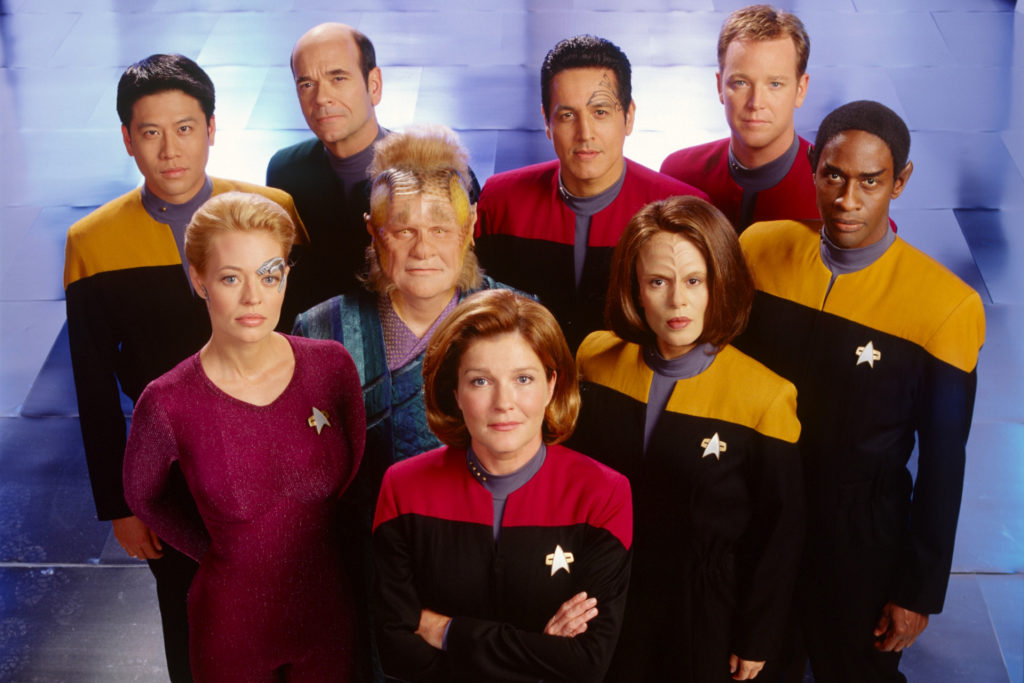 8 Direct Reports, Including a COO. Once you have a team of good VPs in place, and they are executing well … then start thinking of which of them could be managed by a great COO or other CXO. And go out and find her. And see if you can then somehow, get back to 4 direct reports or less. Then, you yourself will be able to scale again. (note: an updated SaaStr Classic post) The post When to Stop Doing It All Yourself appeared first on SaaStr. |
| You are subscribed to email updates from SaaStr. To stop receiving these emails, you may unsubscribe now. | Email delivery powered by Google |
| Google, 1600 Amphitheatre Parkway, Mountain View, CA 94043, United States | |
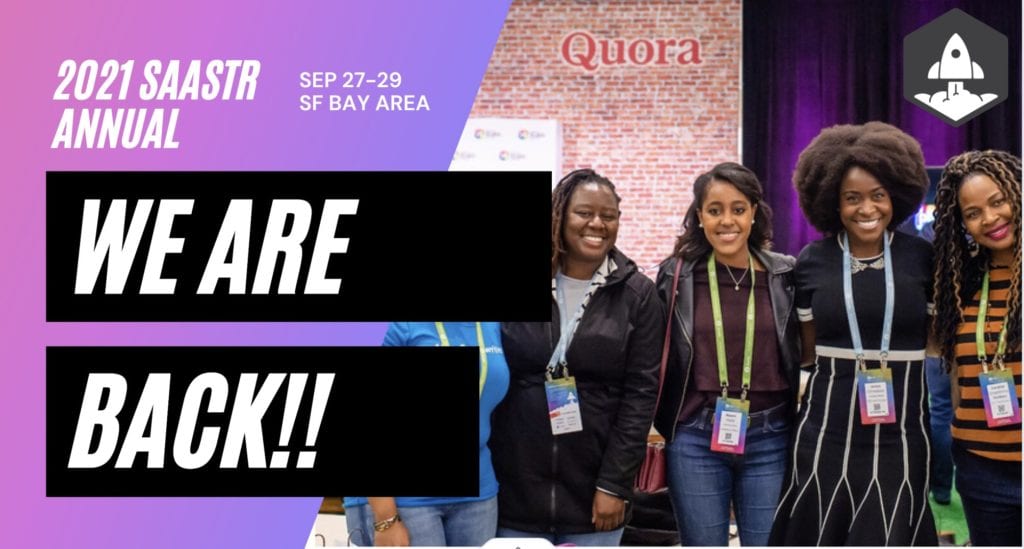


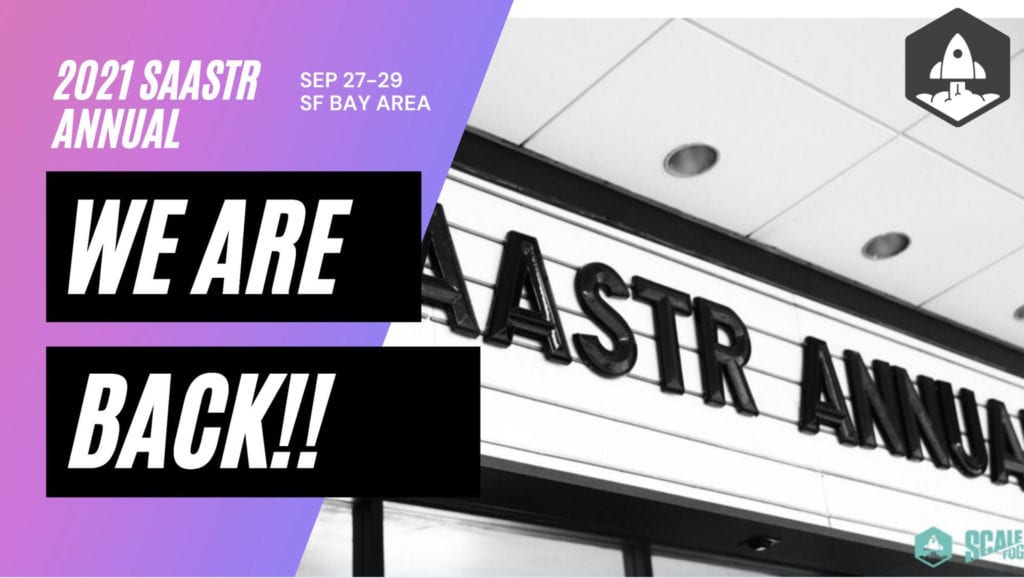
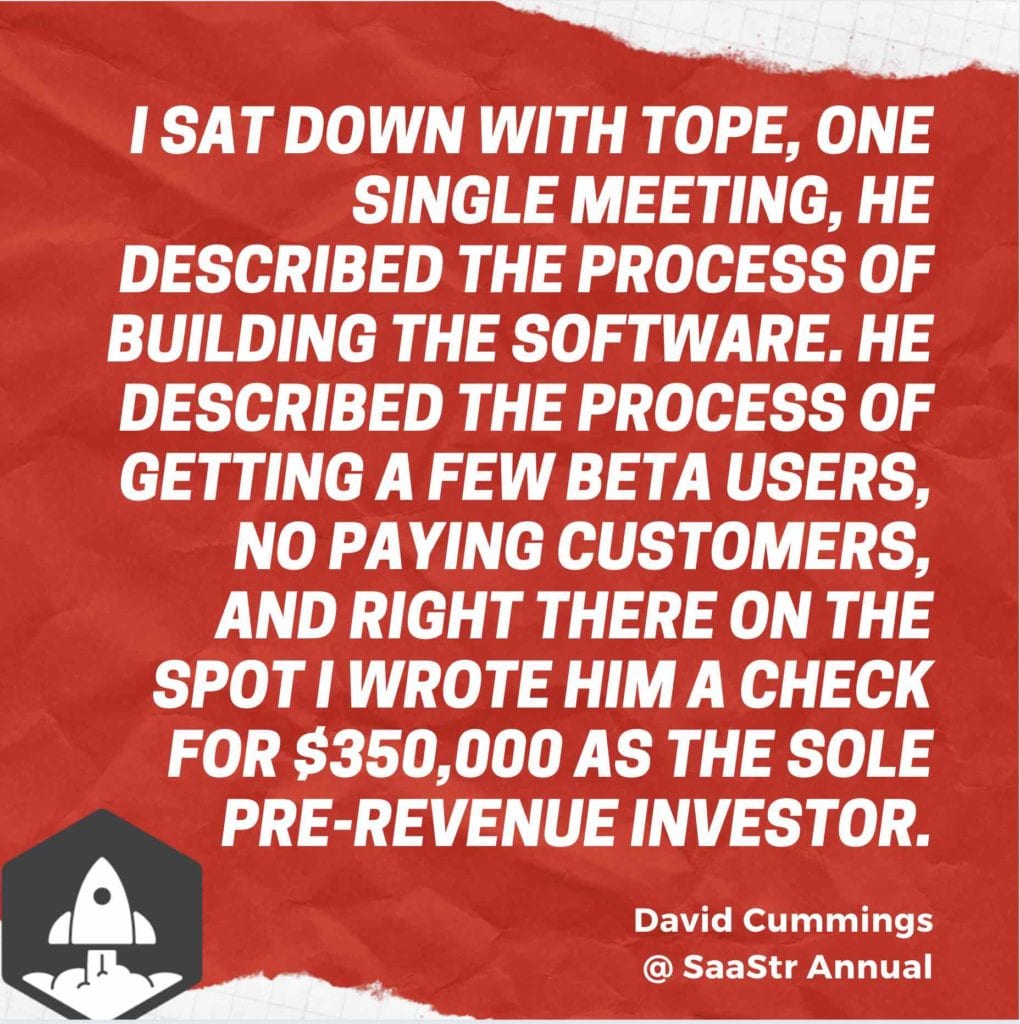

No comments:
Post a Comment